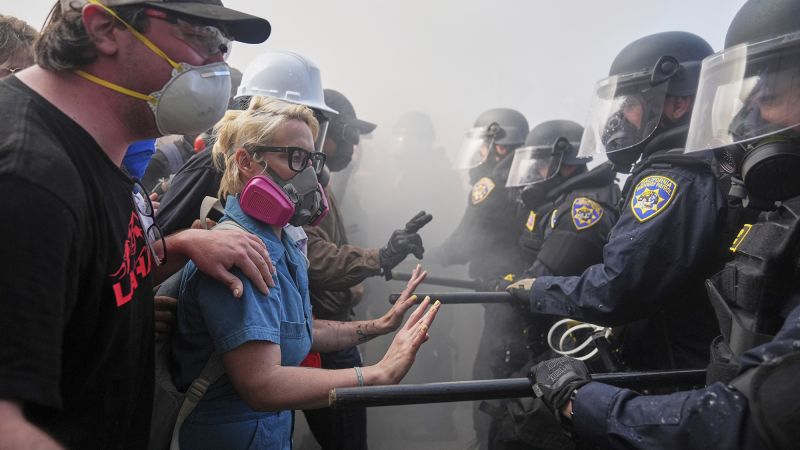In September 2020, former President Donald Trump articulated his perceived limitations regarding the enforcement of law during the racial justice demonstrations that erupted in cities, prominently including Portland, Oregon. In an ABC News town hall, Trump emphasized the necessity of adhering to the laws of the state, stating, “Look, we have laws. We have to go by the laws.” He pointed out that the National Guard could only be activated upon request by a governor, which indicated a clear respect for the bounds of authority and governance at that time.
During that period, Trump referenced the Insurrection Act—a historical piece of legislation from 1807 that empowers the president to deploy United States military personnel in domestic situations deemed extreme. However, he also asserted that there was no necessity to exercise that power, even in the scenarios unfolding in Portland, suggesting a nuanced stance on the government’s role in addressing civil unrest. This perspective, however, represents a stark contrast to his actions taken later against protests related to Immigration and Customs Enforcement (ICE) in Los Angeles, thereby indicating a significant evolution in his approach to dealing with civil demonstrations.
Fast forward to a recent weekend in 2023, Trump deviated from his previous caution. For the first time in roughly six decades, he ordered the National Guard to quell protests without the defense of a governor’s request. This marked a novel use of federal authority, raising eyebrows and concerns regarding legal boundaries and state rights. It was noted that Trump chose not to invoke the Insurrection Act during this call, which meant the guard’s duties were limited—excluding law enforcement actions. Legal experts, such as CNN’s Steve Vladeck, criticized this decision as potentially excessive and likely to aggravate tensions rather than ameliorate them.
Ratcheting up both the rhetoric and potential military presence, Trump opened the door to the notion of deploying more significant military assets, as Northern Command reported that 500 U.S. Marines were on “prepared to deploy” status following his orders. Trump faced journalistic inquiries regarding the nature of the events unfolding, maintaining that they did not constitute an insurrection, but later contradicted himself by labeling these individuals as “paid insurrectionists” on social media, raising questions about his understanding of terminology and legality in such contexts.
The idea of insurrectionally was further propagated by White House advisor Stephen Miller, who began referring to the Los Angeles situation as an insurrection, a considerable shift from the historical context in which this term is normally deployed. The past instances of perceived insurrections—especially following the January 6, 2021, Capitol riots—seem to have broadened the definition among Trump and his associates, thereby diluting its significance in the public discourse. The once-serious implications of a revolt became increasingly applied to various protests and dissenters, such as those protesting the Supreme Court’s decisions or voicing support for the Palestinian cause.
Despite many of these situations lacking any qualities that traditionally characterize an insurrection—namely, a violent revolt aimed at overthrowing government authority—Trump’s administration seems to lean heavily into a redefined perspective that emphasizes a narrative of besiegement by opponents. Miller’s label of “legal insurrection” aimed against judicial opposition to Trump is but one example of this expansionist view.
Nonetheless, as the former president grapples with why he hesitates to invoke the Insurrection Act directly, speculation arises regarding the political ramifications of such an overt show of force. Evaluating strategic military deployments could indeed be intended as a staged response, potentially setting the ground for a more profound federal presence if tumult persists.
The political climate today starkly contrasts with that of five years ago. What once seemed an extreme measure may well become normalized through escalation. The implications of this newly minted definition of insurrection could lead to profound shifts in how federal and state interactions are navigated in turbulent political landscapes, as Trump’s previously inferred limitations begin to dissolve.



